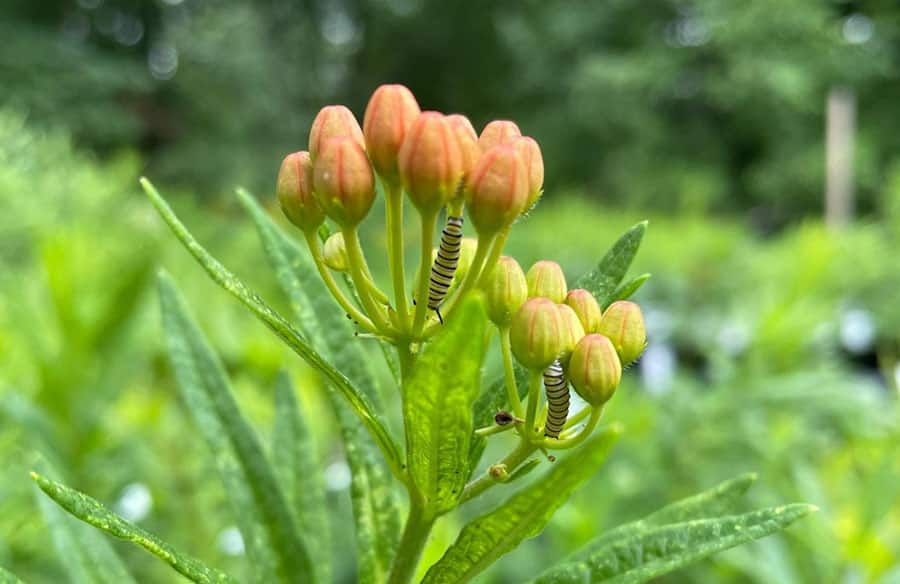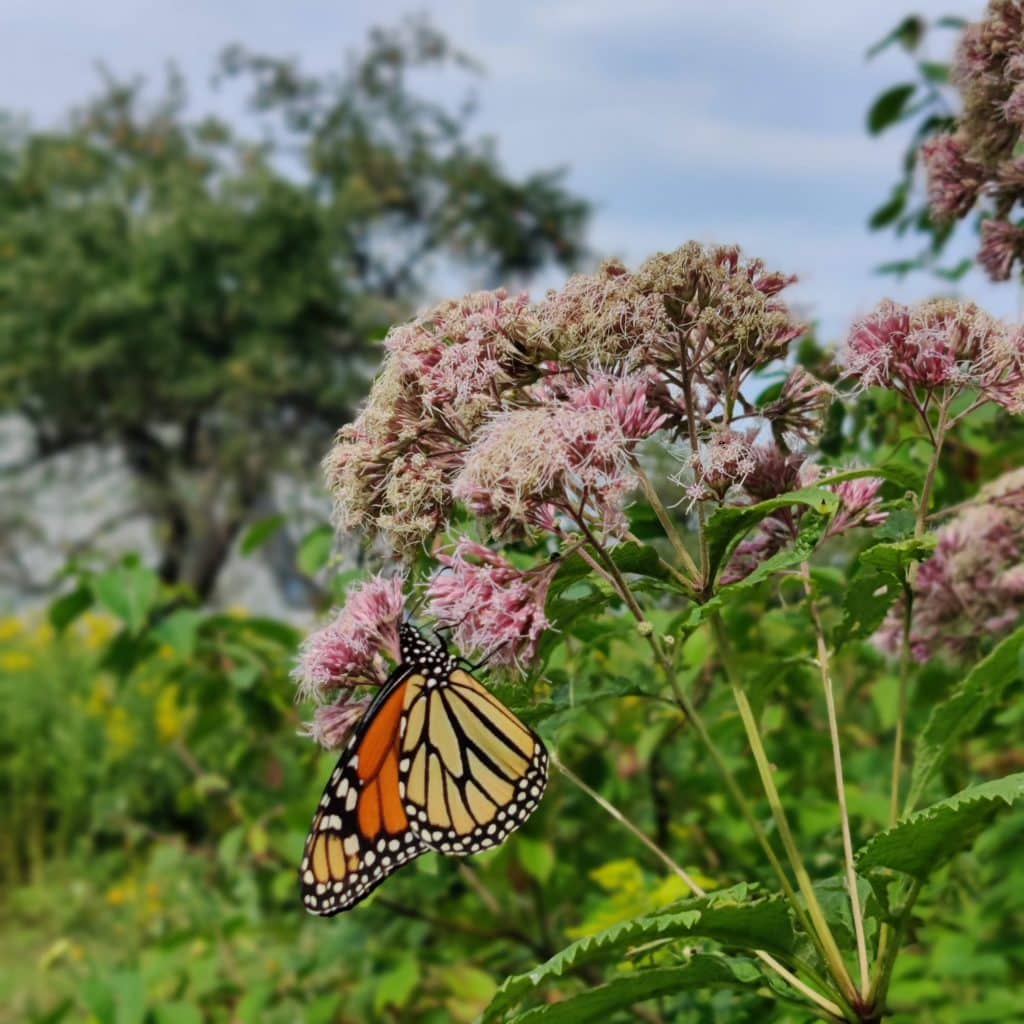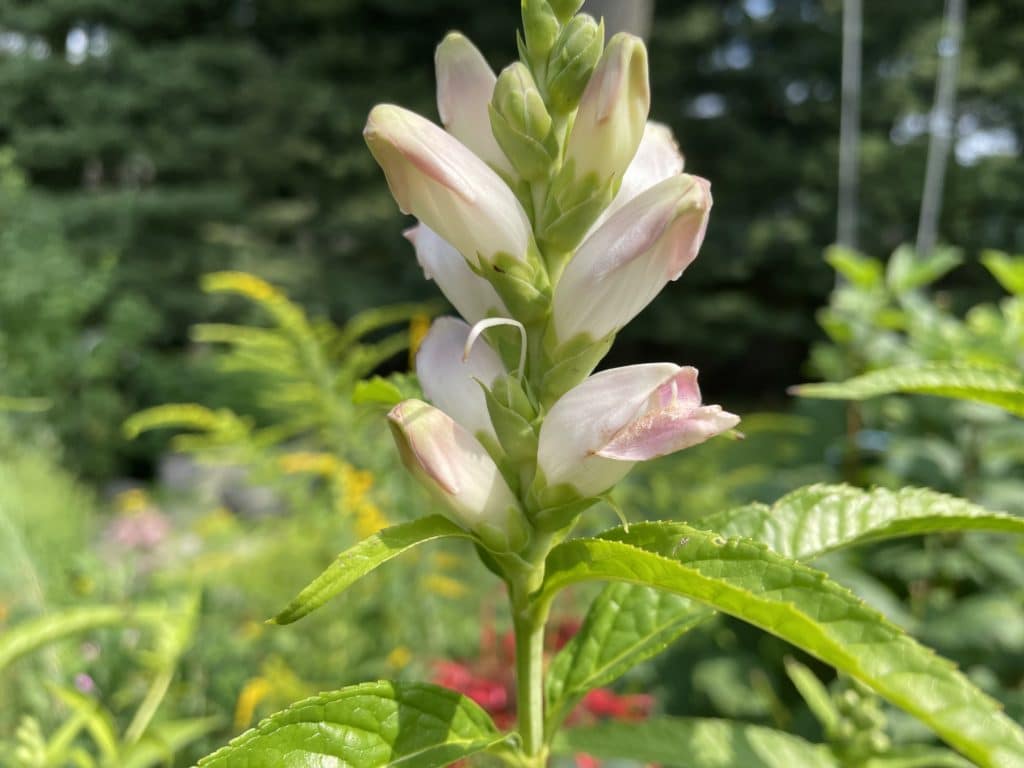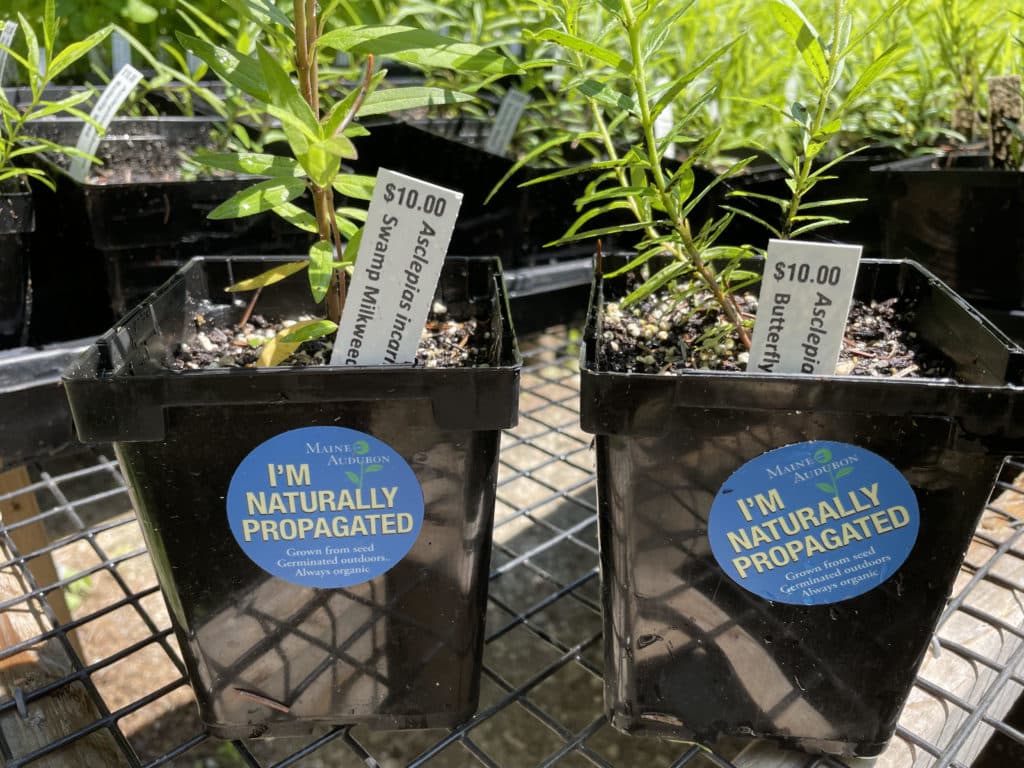
The nights are cooler, the dew point is higher, and the soil is warmer: we have made it to September, the ideal month for planting in Maine!
What makes it ideal? Plants that go in the ground this month have a few weeks to settle, root out a little, and become dormant for winter. Plants planted in early fall also need less help getting going, and often watering them in deeply right when you plant is enough to get them through. As the soil warms next spring, these plants will be far ahead of the same plants that are waking up in pots, even those “forced” to be fully leafed out for May nursery sales.
Maine Audubon has taken advantage of fall planting for years in planning our demonstration projects. Most of these projects can’t be watered easily due to their location and size, so we time those plantings to get the most free help from Mother Nature. While others are “cleaning up” gardens and parks right after Labor Day, you’ll see us and our partners with new plants, tools, and volunteer groups restoring habitat designed to benefit next summer’s baby birds.
For your patch of Maine, Maine Audubon is loaded up for you to join us planting Maine native plants this month. Browse and shop at shop.mainenativeplants.org.
Here are a few highlights, plant recommendations, and tips:
Seed Grown: We have a dozen or so species at Gilsland Farm which are grown from seed, germinated outdoors (over winter), and are always organic. Nikki Oteyza, Landscape & Horticultural Associate, has caringly sown, germinated, divided, grown, and protected from critters, these beautiful and beneficial babies since last November. Look for the “Seed Grown” tab on our website.
Monarchs and More: Monarch caterpillars need milkweed, and Maine Audubon is still loaded up with seed-grown Butterflyweed and Swamp Milkweed. The butterflies will need nectar from late-bloomers like asters and goldenrods, which will also then later serve as critical seed material for late fall birds like sparrows and finches. For goldenrods and asters, Maine Audubon currently has seed-grown Solidago caesia (Blue-stemmed Goldenrod), S. flexicaulis (Zigzag Goldenrod), S. sempervirens (Seaside Goldenrod), and Symphyotrichum novae-angliae (New England Aster) and Symphytrichum laeve (Smooth Blue Aster). All are hypoallergenic (hay fever from goldenrod is a myth!) and available in less aggressive/spreading varieties.

Stretch Your Own Moisture Tolerance: Speaking of Swamp Milkweed, did you know that the soil in your pots, garden, and yard is likely better at retaining moisture than many natural soils? So, species like our favorite non-spreading milkweed can thrive far beyond the confines of their namesake habitats. Lobelia, turtlehead (pictured below), irises, Liatris, and other wetland species all thrive in developed landscapes that aren’t necessarily high and dry. If you have a spot that is low and/or has particularly rich soil, try a species or two that skews slightly more moist than you have been. You may discover conditions for a mini wetland like this one in a not-exactly-moist/wet spot in Portland.

Plant a Tree: The warming climate has made it especially difficult to plant and establish trees and shrubs in the heat of summer. Now more than ever, fall is the best time to get these larger, thirstier plants in the ground.
Members-Only Sale: Maine Audubon members will be offered a 20% discount on herbaceous plants (perennials) later in September. If you aren’t currently a member, join now! Look for an email with a discount code coming to members shortly.
While it’s hard to know what else this fall will bring for our schools, offices, families, and communities, restoring ecology around us wherever we can will help both wildlife and ourselves get through it. Plant a native plant or three this fall, and see for yourself!

